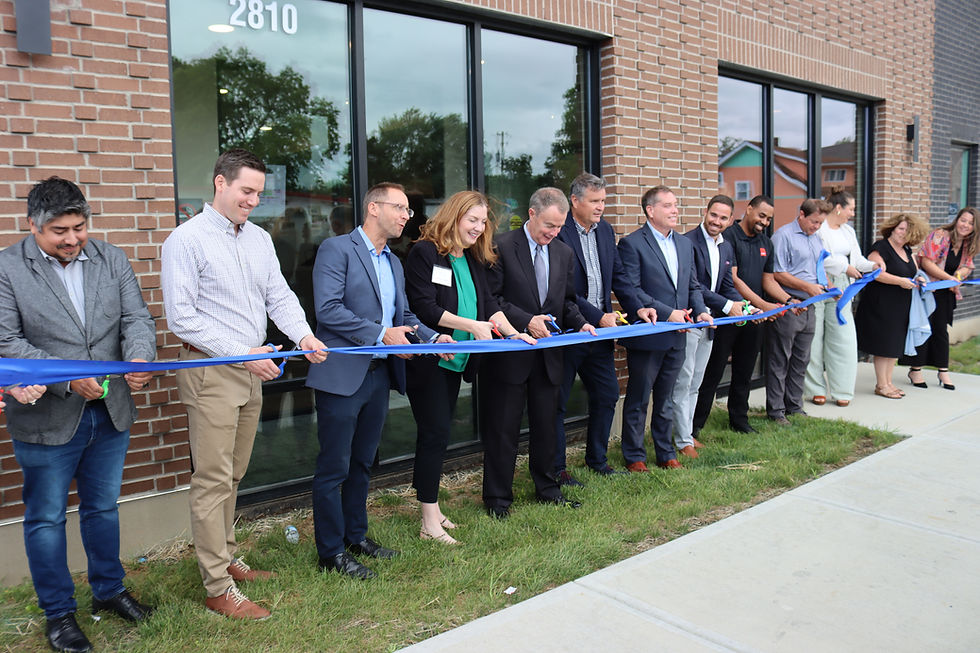Housing for Homeless Students Act of 2014
- CREA
- Jul 31, 2014
- 3 min read
Updated: Nov 1, 2022
By: Senators Al Franken and Rob Portman
Too often, youth and veterans who have experienced homelessness must choose between stable housing and a full-time education. Because of a limitation in the eligibility criteria for the Low Income Housing Tax Credit (LIHTC) program, homeless or previously homeless individuals who would otherwise qualify to live in low-income housing lose eligibility for LIHTC rental units if they choose to attend school full-time. The Housing for Homeless Students Act of 2014 will ensure that individuals, including veterans, who have experienced homelessness have access to affordable housing while they pursue an education
The problem
The Low Income Housing Tax Credit (LIHTC) Program provides a reduction in tax liability for developers that build or rehabilitate affordable rental housing units. LIHTC has been used successfully to build properties intended to house individuals and families who experience homelessness. However, the current law does not allow tenants, including homeless and formerly homeless individuals, to be full-time students.
The intent of this “student rule” is to prohibit LIHTC funds from being used to construct dormitories and to prevent college students, who often have temporarily low incomes, from utilizing resources meant for individuals and families with more serious and longer-term housing needs. However, the student rule provides no exception for homeless and previously homeless youth or veterans. Because of this, students may lose access to LIHTC housing units if they go to school full-time. Alternatively, if they choose to attend school part-time in order to keep their LIHTC housing eligibility, these students may lose access to grants, loans, and scholarships that are limited to full-time students. In effect, the current rule holds back truly low-income individuals trying to achieve an education.
Housing for Homeless Students Act of 2014
This legislation will exempt individuals from the student rule if they experienced homelessness at any point in the five years prior to moving into the LIHTC. This expanded eligiblity will include homeless individuals covered by the definition of “homeless children and youth” in the McKinney-Vento Homeless Assistance Act. The bill also includes veterans who have been homeless to ensure that they have access to affordable housing while seeking an education.These changes to the student rule will allow full-time students who experience or have recently experienced homelessness to become eligible (or retain eligibility) for LIHTC housing units.
National endorsements
Affordable Housing Tax Credit Coalition Covenant House International First Focus Campaign for Children Institute of Real Estate Management National Affordable Housing Management Association National Affordable Housing Trust National Alliance to End Homelessness National Association for the Education of Homeless Children and Youth National Association of Consumer Advocates National Center for Housing and Child Welfare National Coalition for Homeless Veterans National Coalition for the Homeless National Fair Housing Alliance National Law Center on Homelessness and Poverty National Leased Housing Association National Low Income Housing Coalition National Network for Youth Stewards of Affordable Housing for the Future The Leadership Conference on Civil Rights True Colors Fund
Minnesota endorsements
Catholic Charities of St. Paul and Minneapolis Children’s Defense Fund-Minnesota Metropolitan Consortium of Community Developers Minneapolis / Hennepin County Office to End Homelessness Minnesota Coalition for the Homeless Minnesota Council of Child Caring Agencies Minnesota Housing Partnership Minnesota State Colleges and Universities Minnesota State University Student Association Minnesota TRiO Twin Cities Habitat for Humanity
To read the Housing for Homeless Students Act of 2014, click here. For more information, please contact Matt Hayward in Senator Franken’s office at matt_hayward@franken.senate.gov or 4-1984.



